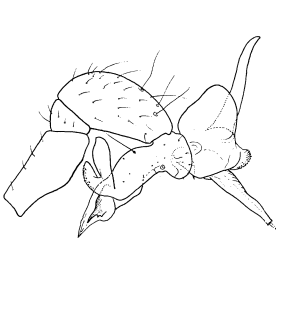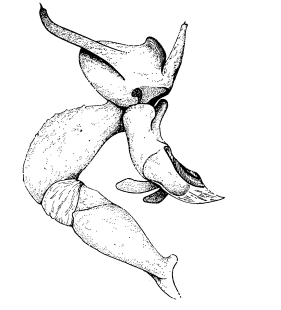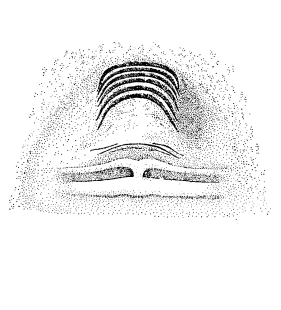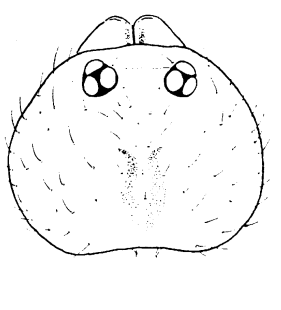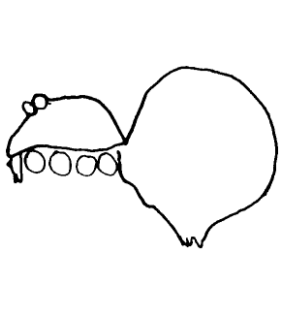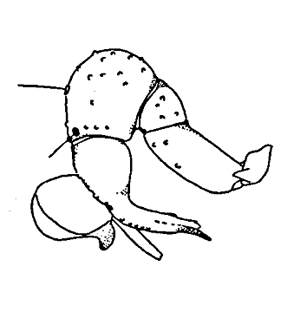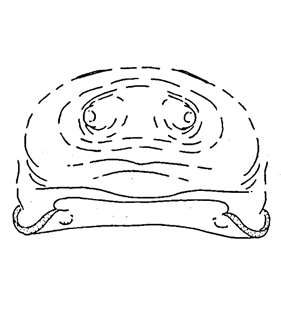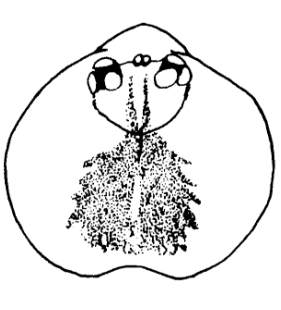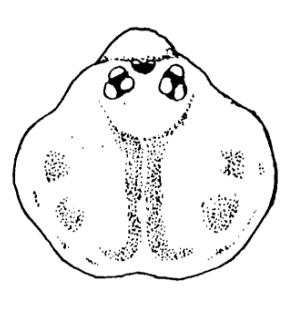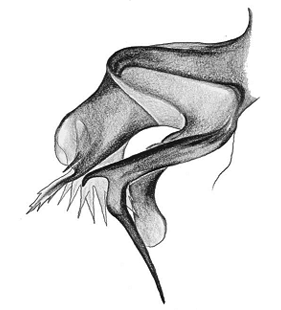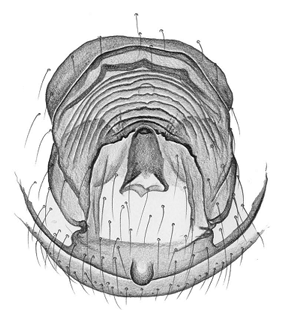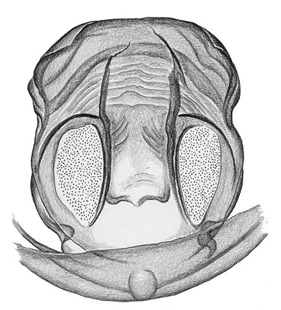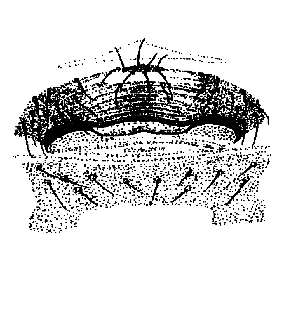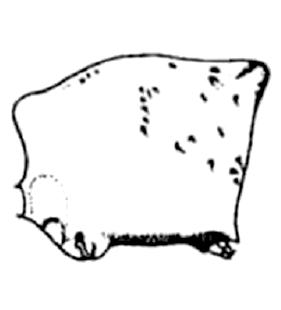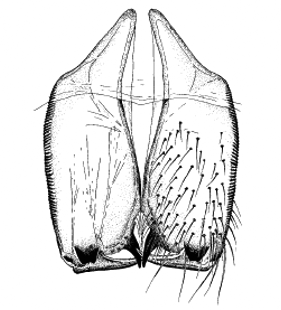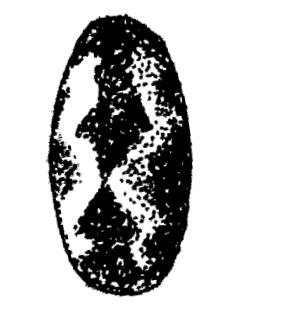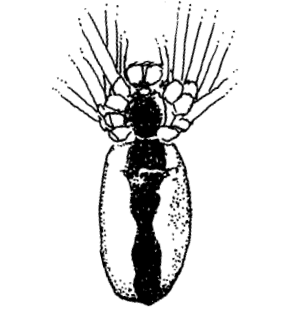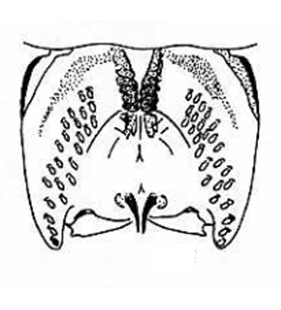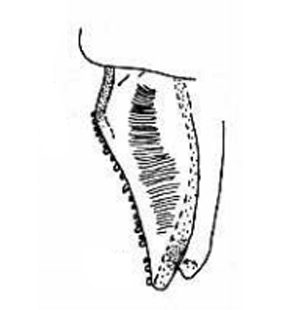Familie Pholcidae C. L. Koch, 1850
Schlüssel nicht vollständig. Weitere Gattungen sind am Ende aufgelistet. |
Für Fehlermeldungen oder Verbesserungsvorschläge bitte Link folgen: click
|
|||||||
| 1 |
Sechs Augen (vordere Mittelaugen fehlen) |
|||||||
| - | Acht Augen |
|||||||
| 2 (1) |
Prosoma mit medianer Vertiefung, Augendreiergruppen auf medianer Erhebung, sehr hoch bei Männchen |
| ||||||
| - | Prosoma ohne mediane Vertiefung; Augendreiergruppen auf kleinen Hügeln |
|||||||
| 3 (2) |
Paracymbium am Palpus des Männchens mit ventraler Lasche; hinterer Bereich der Epigynenplatte ohne Taschen |
|||||||
| - | Paracymbium am Palpus des Männchens ohne ventrale Lasche; hinterer Bereich der Epigynenplatte mit paarigen Taschen |
|||||||
| 4 (1) |
Prosoma gleichmässig gewölbt, ohne mediane Vertiefung |
|||||||
| - | Prosoma mit medianer Vertiefung |
|||||||
| 5 (4) |
Grössere Art (Körperlänge >4 mm) mit zylindrischem Opisthosoma |
| ||||||
| - | Kleine Art, (Körperlänge ≤ 3 mm) mit rundlichem Opisthosoma (ungefähr so hoch wie lang) |
|||||||
| 6 (5) |
Opisthosoma, Procursus (Paracymbium) des männlichen Pedipalpus mit langem dorsalem Fortsatz, weibliche Genitalien mit frontaler, halbkreis- oder bogenförmiger Struktur, durch die Cuticula sichtbar |
| ||||||
| - | Paracymbium (procursus) ohne dorsalem Fortsatz, weibliche Genitalien mit einem Paar externer Epigynentaschen, ohne innere, mediane Struktur, die durch die Cuticula durchscheint (Quamtana) |
|||||||
| 7 (4) |
Kleine Art (Körperlänge 3 mm), Prosoma mit medianer Furche |
| ||||||
| - | Grösser (Körperlänge 5-10 mm), Prosoma mit medianer Grube |
|||||||
| 8 (7) |
Opisthosoma höher als lang |
|||||||
| - | Opisthosoma länger als hoch |
|||||||
| 9 (8) |
Beine mit vielen kleinen, schwarzen Punkten / Linien |
|||||||
| - | Beine ohne kleine schwarze Punkte / Linien |
|||||||
| 10 (9) |
Opisthosoma dorso-posterior zugespitzt, männliche Cheliceren mit 2 Paar frontaler Apophysen |
| ||||||
| - | Opisthosoma dorso-posterior gerundet, männliche Cheliceren mit einem Paar frontaler Apophysen |
| ||||||
| 11 (9) |
Männliche Cheliceren frontal mit vielen abgewandelten (keulenförmigen) Haaren |
| ||||||
| - | Männliche Cheliceren frontal mit Apophysen, die je 1-3 abgewandelte (keulenförmigen) Haaren aufweisen |
|||||||
| 12 (11) |
Beim Männchen Femur 1 ventral mit Stacheln, Epigyne ungefähr dreieckig |
|||||||
| - | Beim Männchen Femur 1 ventral ohne Stacheln, Epigyne ungefähr viereckig |

